At the end of each year, I look back at my adventures throughout the year and choose my favourite destinations that I visited for the first time that year. 2020 has been a most unusual year travel-wise (and everything else-wise), but I was lucky enough to have travelled in the months before lockdown as well as during the summer and autumn when case numbers were low in Europe, so this list is also possible for me to make this year!
In 2015, my favourites included Svalbard, Northern Sweden and Kangaroo Island in Australia. In 2016, some of my favourites were Budapest in Hungary, Sultan Eshkashim in Afghanistan and the Åland Islands. In 2017, some of my favourites were Abyaneh in Iran, Gjirokastra in Albania and Malmö in Sweden. In 2018, my favourites included Baku in Azerbaijan, Meteora in Greece and Narsarsuaq in Greenland. And in 2019, my favourites included Kyiv in Ukraine, Stepnoye in Russia and Jerusalem in Israel.
2020 brought me to less countries than any other year since I first started travelling solo in 2015, but I got to explore large parts of Scotland, Denmark, Germany and the Faroe Islands, as well as parts of Austria and Switzerland. Below is my list of favourite destinations of 2020 in chronological order, including only those that I visited for the first time, so places like Endelave in Denmark and Gásadalur on the Faroe Islands are excluded.
1. Isle of Skye, Scotland
The Isle of Skye is one of the fastest growing tourist destinations in Scotland, and it’s no wonder why. The island is rich in breathtaking nature including high snow-capped mountains, volcanic rock formations, dramatic coastlines, turquoise lakes and majestic waterfalls, as well as intriguing historic sites such as ancient castles, abandoned hotels and charming old fishing villages.
My younger brother and I spent two months living and working on Skye at the beginning of the year, and I absolutely loved exploring the place in depth during our days off!
Read more: 20 amazing experiences on the Isle of Skye, including local secrets
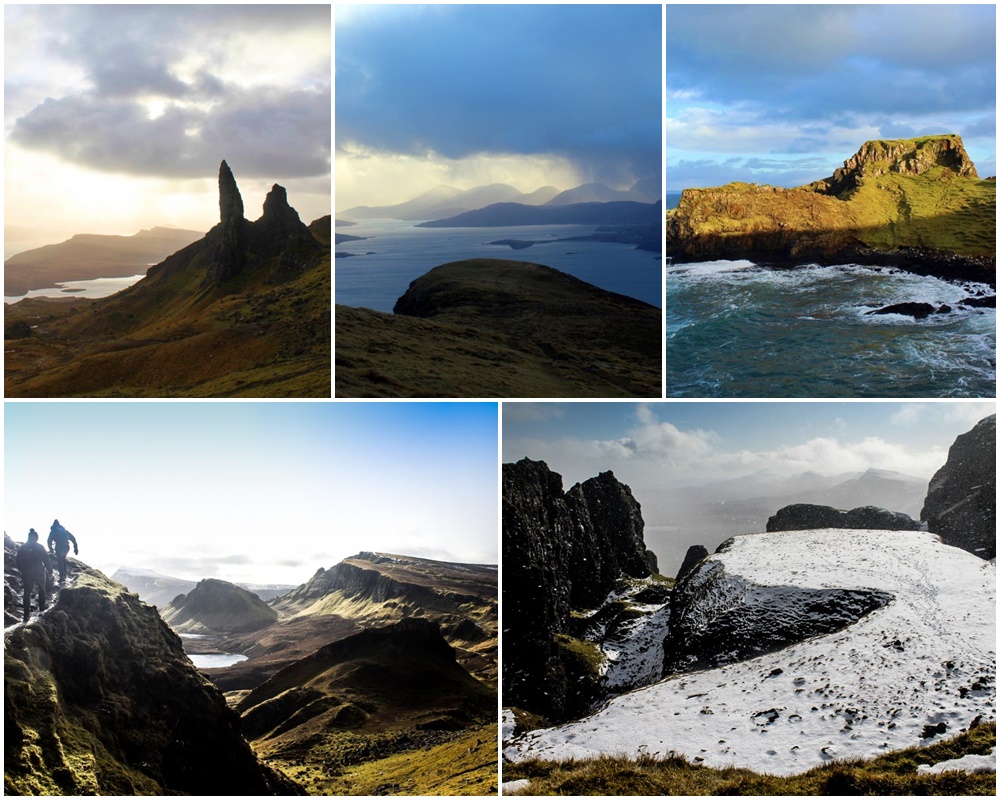
2. Raasay, Scotland
The Isle of Raasay is Skye’s unknown neighbour, which is even more of a gem than Skye itself (yes, it’s possible!). Raasay is much smaller than Skye and with just 150 inhabitants, it’s as idyllic as can be. The island is absolutely gorgeous and offers an abundance of hikes along historic trails. My favourite trails took my brother and I up the mountain Dun Caan, and along Calum’s Road to Arnish where we continued to the abandoned tidal island of Fladda.
Two days on Raasay was enough to fall head over heels in love with the place! I can’t wait to return someday.
Read more: Two days on Raasay, my favourite island in Scotland
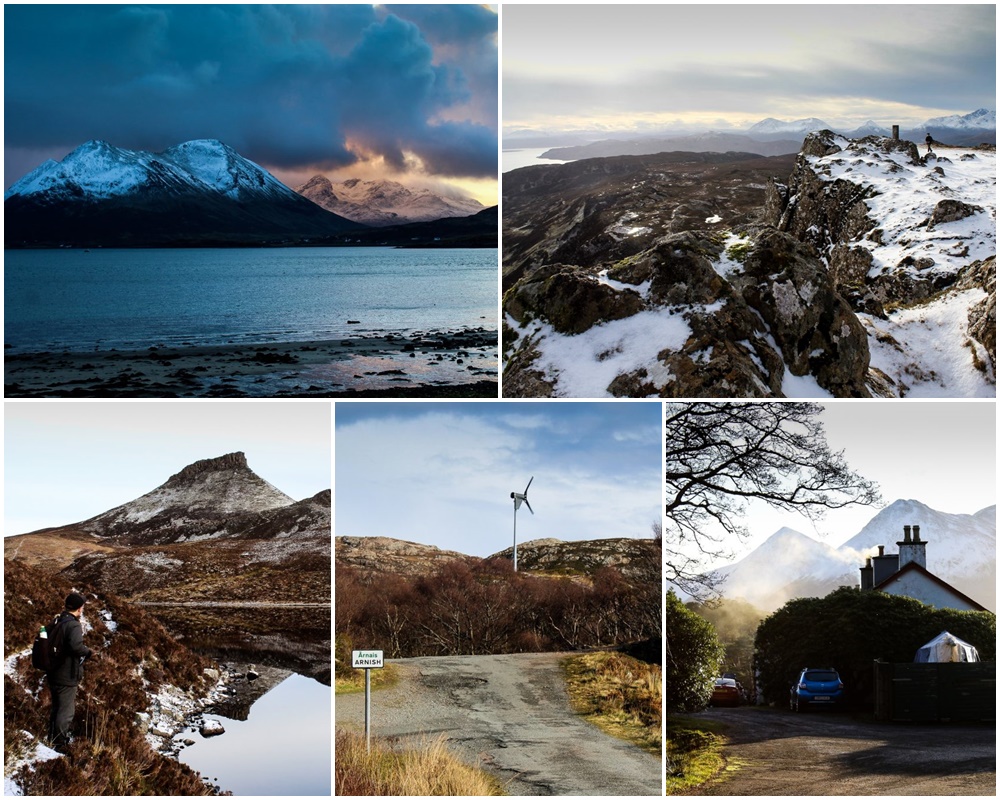
3. Lewis and Harris, Scotland
Before we flew back to Denmark, my brother and I went on a six-day roadtrip through the Outer Hebrides, a chain of dramatic islands west of Skye. The main island – and the best known one – is the Isle of Lewis and Harris.
The island offers some of the most gorgeous cliffs and sea stacks I’ve ever seen at Mangersta, an isolated lighthouse at the northernmost end, traditional blackhouses and stone churches and vast sandy beaches that made me feel like I was back in California (on a cold and rainy day!). And then there’s the Calanais Standing Stones, the Outer Hebrides’ own version of Stonehenge, which is actually 500 years older than its famous sibling!
Read more: Over the sea to Lewis and Harris, the heart of the Outer Hebrides
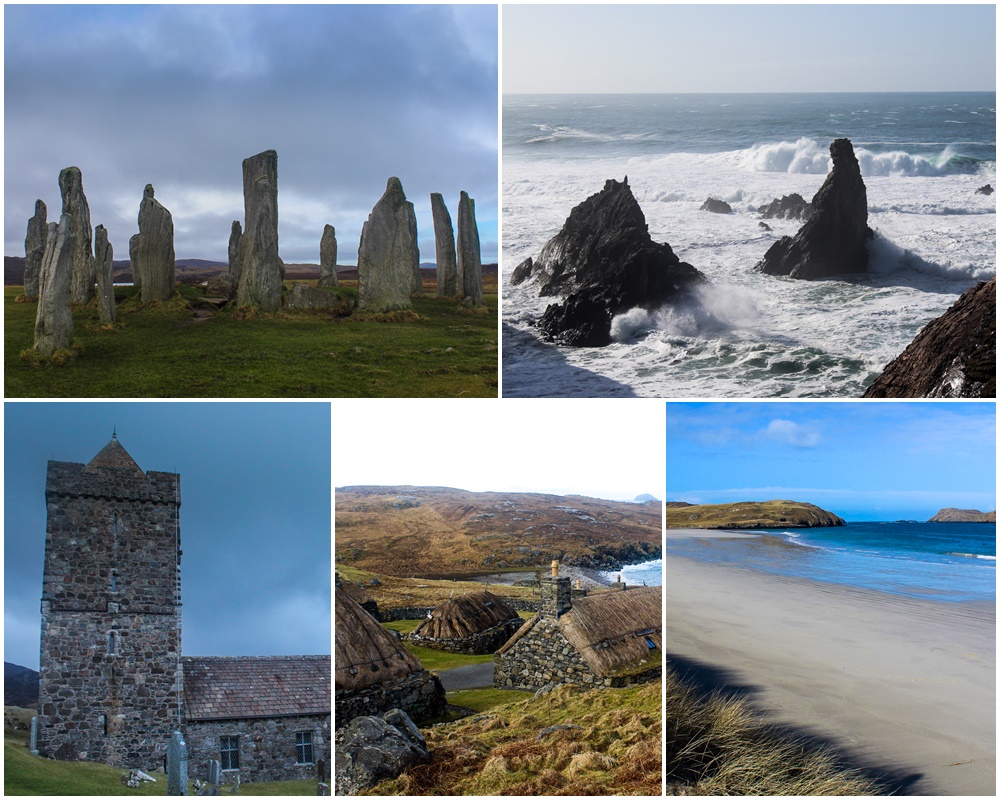
4. The Uists, Scotland
Just south of Lewis and Harris are the low-lying islands, the Uists, which are made up of five main islands and hundreds of islets and skerries. The Uists are much less visited than Lewis and Harris, and are maybe the closest you can get to being off the beaten path in Scotland (okay, maybe except for St Kilda and Fair Isle!).
I’m at a loss of words to explain the beauty of the islands. There are no high mountains or vast forests, but the landscapes are most unusual as most of the islands are made up of moorlands that often stretch right down to sea level, and you can’t go anywhere on the Uists without seeing fjords full of skerries. As for beaches, the northern island of Berneray gives Lewis and Harris a serious run for its money!
Read more: Rocky, rugged and remote: The surprising beauty of the Uists
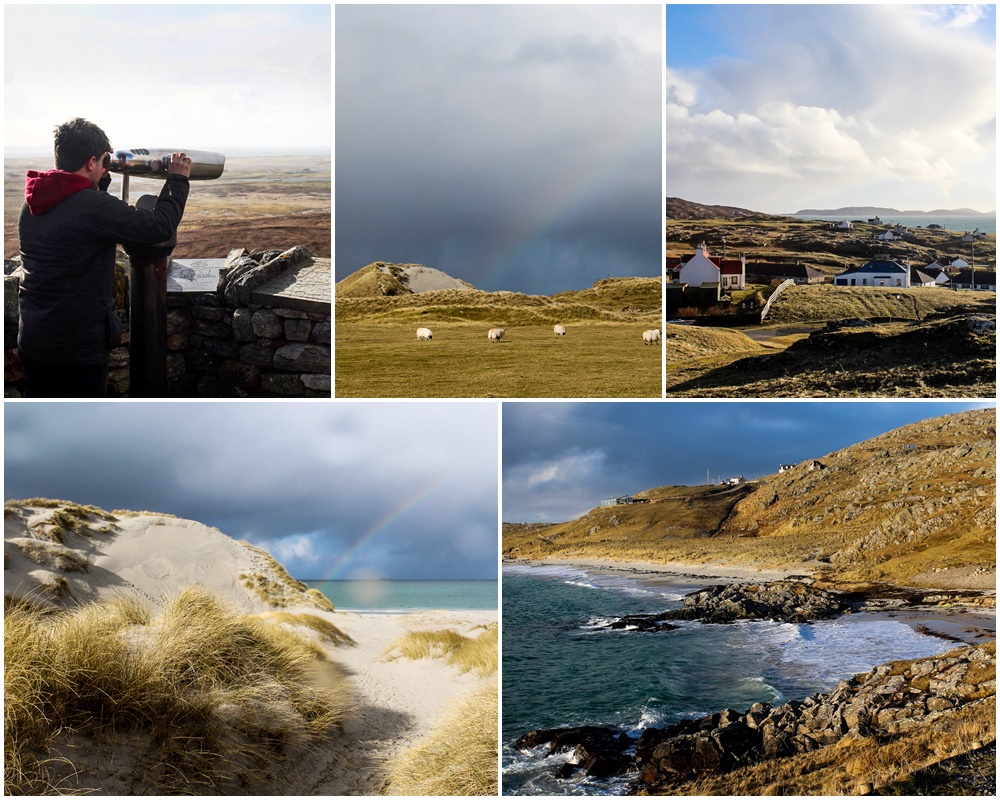
5. Stralsund, Germany
I usually don’t feel comfortable in cities, in fact, I rarely spend more than a couple of days in one. But Stralsund on Germany’s Baltic Coast was different. My family and I based ourselves in the city for our eight-day summer holiday, and we all loved it.
Stralsund’s old town is a UNESCO World Heritage Site, so you can probably imagine the historic, charming atmosphere that resides in the city. The streets are narrow and cobbled, the architcture momentous and endearing, and the summer nights long and enchanting.
Read more: Stralsund and Dänholm: Hanseatic charm on the Baltic Sea
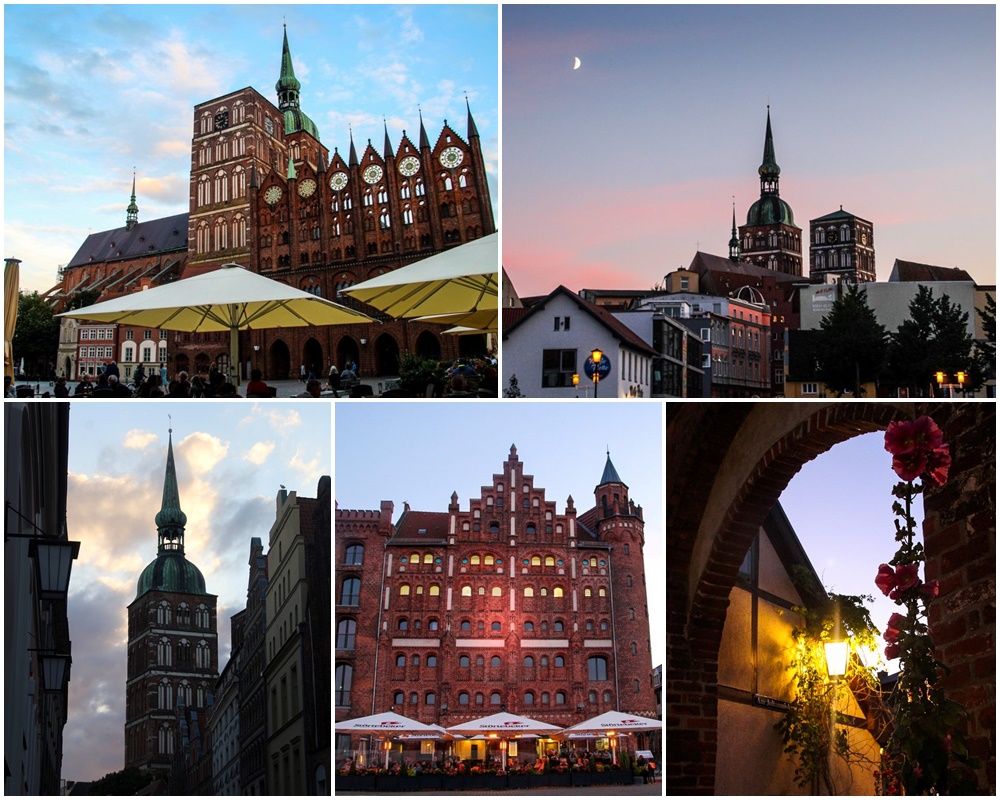
6. Rügen, Germany
Just across the bridge from Stralsund lies Germany’s largest island, Rügen. It’s a very popular summer destination for German holiday makers that come to enjoy the islands’ vast beaches and seaside resorts.
But Rügen is more than just a beach holiday. It also offers majestic chalk cliffs, ancient beech forests, charming rides on an old steam train, old lighthouses, colourful thatched cottages and the world’s longest building, erected just prior to the Second World War by the man the whole world wants to forget.
Read more: A week on Rügen, Germany’s largest island
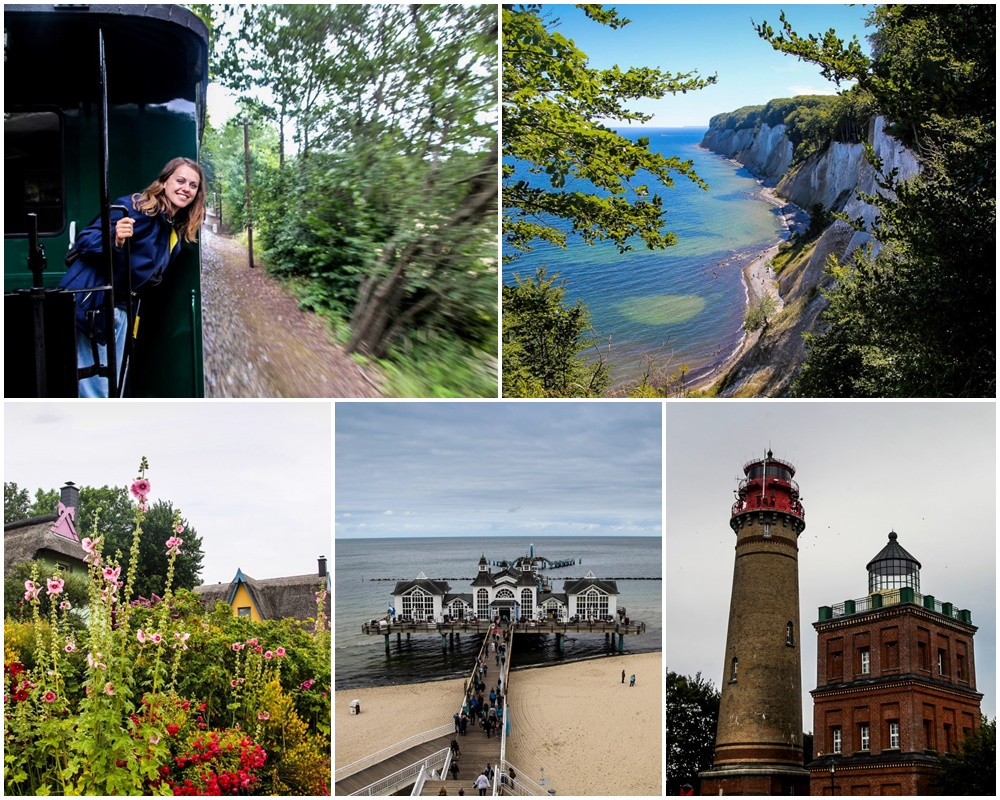
7. Hiddensee, Germany
Hiddensee is a tiny island of around 1,000 inhabitants that is located off the western coast of Rügen. It’s well-known for being one of Germany’s few car-free islands, and it offers an abundance of nature walks in peaceful surroundings.
My family and I visited Hiddensee on a day trip and explored the village of Kloster and went for a hike through the hills just north of the village where the Dornbusch Lighthouse stands majestic over this gem of the Baltic Sea.
Read more: Idyllic Hiddensee: A car-free island in the Baltic Sea
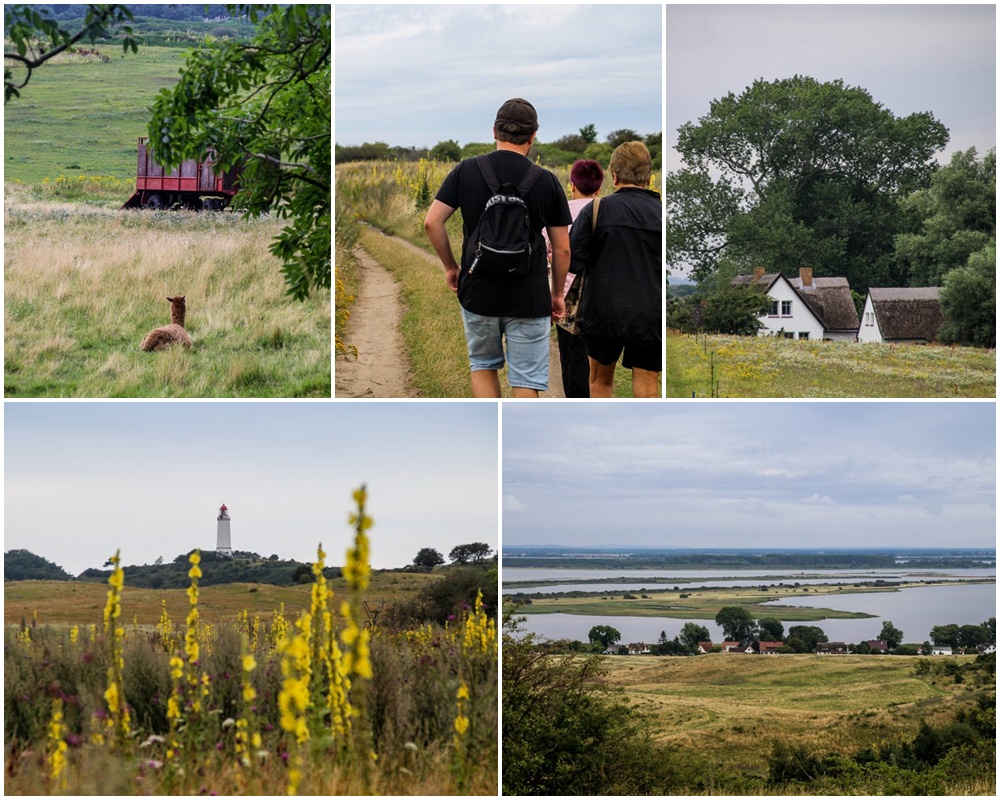
8. Bavarian Alps, Germany
From north to south, my solo adventure through Germany culminated in a roadtrip through the Bavarian Alps, revealing some of the finest nature that Germany has to offer.
My roadtrip took me along the most gorgeous stretches of roads, through the sun-kissed mountains and green forests, up to fairytale castles and ruined fortresses and to alpine lakes where I enjoyed fresh morning swims.
Read more: Churches, lakes and castles: The pure beauty of the Bavarian Alps

9. Hinterriß and Eng, Austria
The Austrian Alps are home to three unusual regions known as pene-exclaves. These areas are Austrian, but can only be reached via Germany. During my roadtrip through the Bavarian Alps, I visited these three regions, the first of which was Hinterriß and Eng.
Out of the three, Hinterriß and Eng is the least known region, but that has more to due with its isolated location than its beauty. Because beauty is something it has plenty of. Never in my life have I seen such a gorgeous green valley, surrounded by the steep Karwendel mountain range that reveals just why this area can’t be accessed from the rest of Austria. I only spent a few hours in the area, but I immediately regretted leaving when I did. I will just have to come back!
Read more: Hinterriß-Eng: Discovering Austria’s unknown pene-exclave

10. Jungholz, Austria
Jungholz is by far the most interesting of the three pene-exclaves, geography-wise. It’s only connected to the rest of Austria by a single point, the summit of the mountain Sorgschrofen at 1,636 m!
Of course, I just had to climb this mountain when I visited Jungholz. It was tough, especially since I only had sneakers to hike in, but it was well worth it for the geographical oddity and for the incredible views over Jungholz, Bavaria and the Austrian Alps that were revealed as I reached the summit.
Read more: High up in the Alps: Standing between four borders on Mt. Sorgschrofen
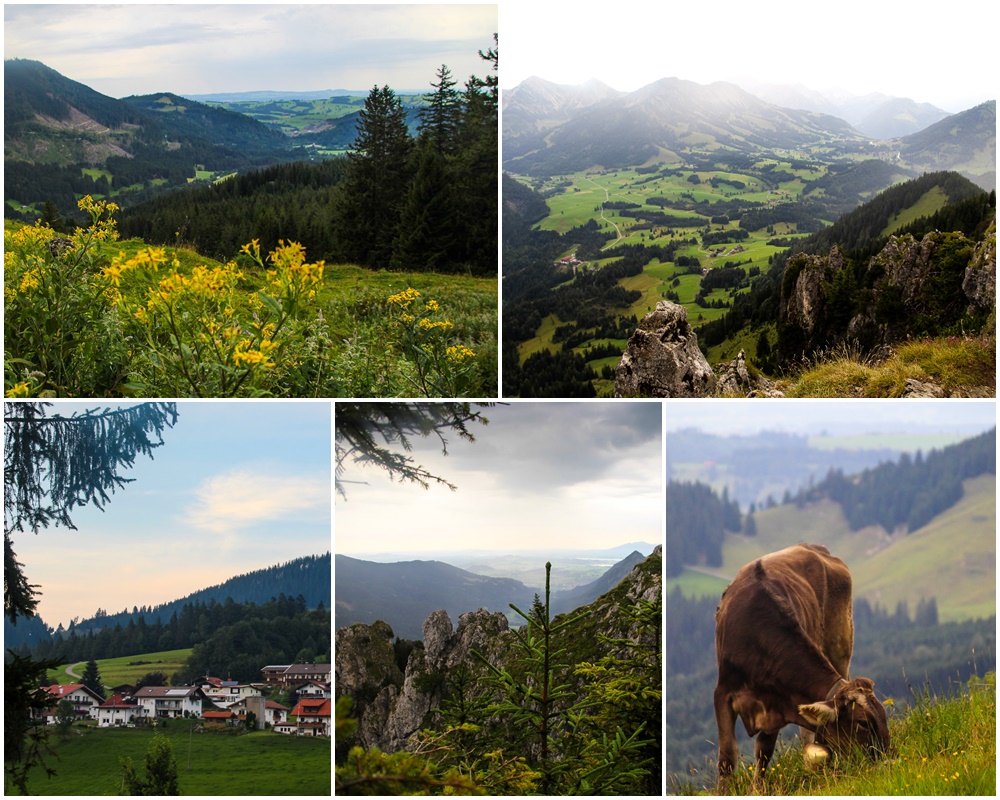
11. Kleinwalsertal, Austria
By far the most visited of the three pene-exclaves, Kleinwalsertal is a feast for the eyes. It’s no wonder that this place was swarming with tourists, even during a pandemic.
Although I’d only planned for a few hours in the valley, I ended up spending the night because I just couldn’t get myself to leave without a hike. A heavy rainfall appeared just as I’d checked into my hotel, but thankfully, it ended very suddenly two hours later, revealing a blue sky and low-hanging clouds over the trees. I chose a 5 km trail through Gemsteltal, a gorgeous side valley to Kleinwalsertal, the perfect place for a short evening hike.
Read more: After the rain: A spontaneous hike in Austria’s Kleinwalsertal Valley
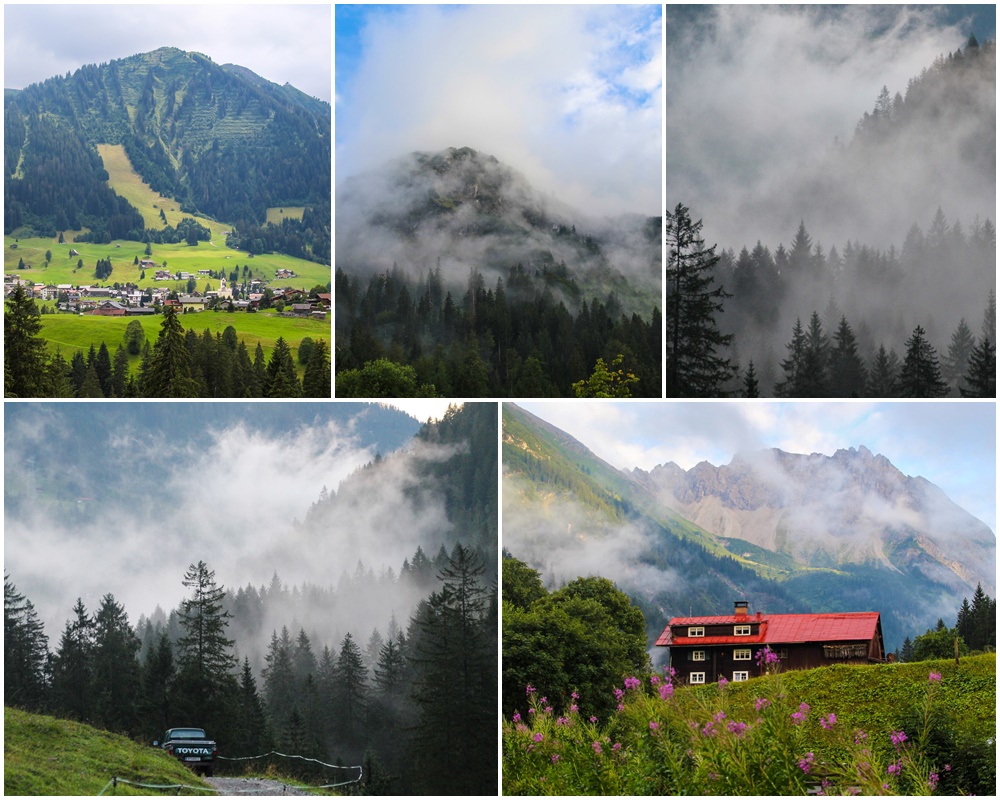
12. Stein am Rhein, Switzerland
During my roadtrip through Germany, I decided to take a detour into the northern corner of Switzerland to visit the city of Stein am Rhein. As the name says, the city lies on the banks of the Rhine, beautifully surrounded by low-lying green hills.
But the best thing about Stein am Rhein is its city centre, which is one of the best preserved medieval city centres in Europe. It’s full of half-timbered cottages and buildings with the most beautifully painted facades I’ve ever seen.
Read more: A brief visit to Switzerland and the German exclave of Büsingen
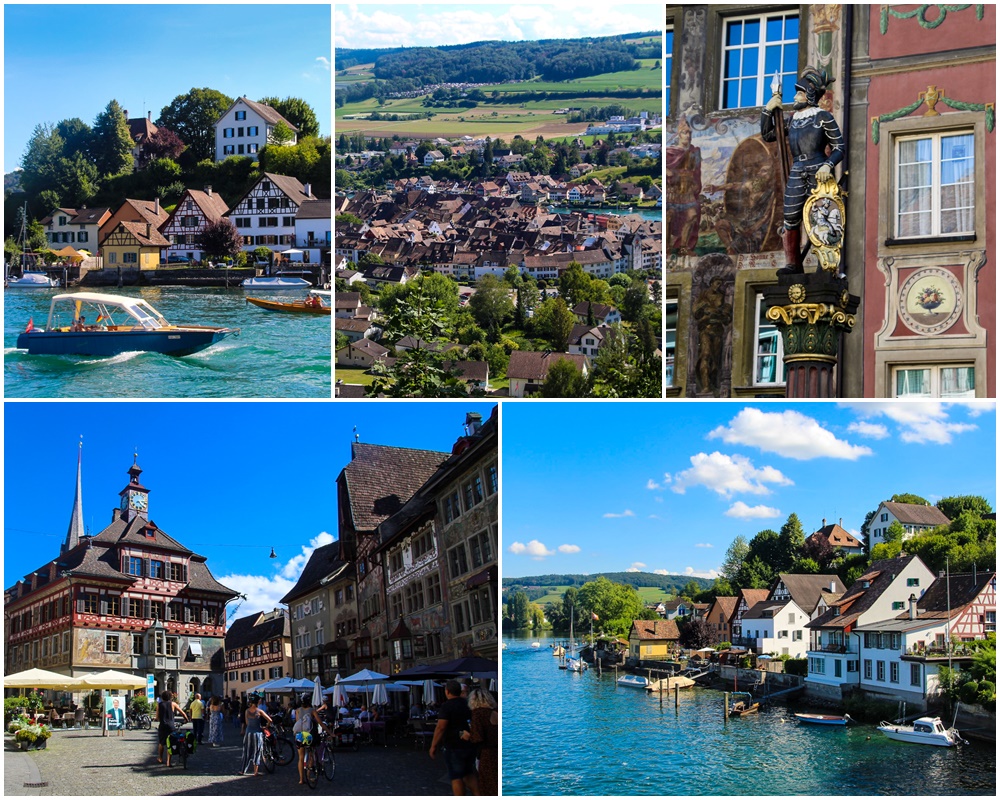
13. Büsingen am Hochrhein, Germany
Another place that I wanted to see in northern Switzerland is actually a German exclave, Büsingen am Hochrhein. This little piece of Germany is completely surrounded by Switzerland, although you wouldn’t notice if you didn’t already know as there is no border control whatsoever.
This exclave is quite beautiful with many half-timbered houses dotted along the Rhine, but the main sight for geography nerds is Restaurant Waldheim which is located in both Switzerland and Germany – in fact, the border goes right through the dining area!
Read more: A brief visit to Switzerland and the German exclave of Büsingen
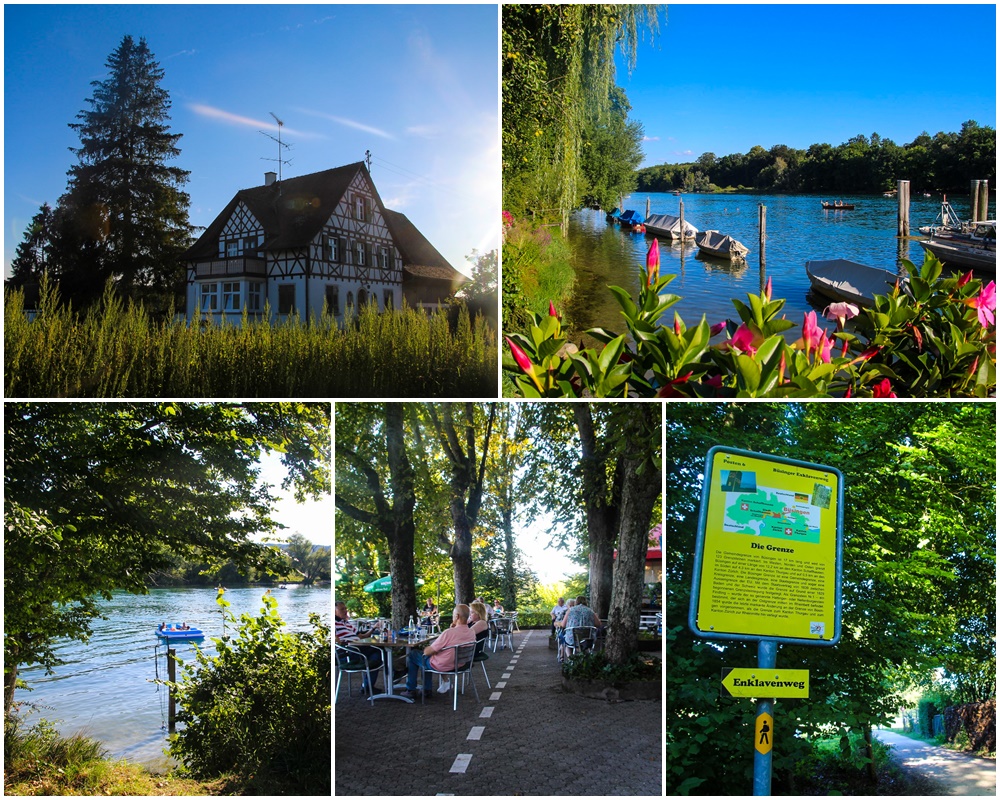
14. Black Forest, Germany
With forests and low-lying mountains as far as the eye can reach, Germany’s Black Forest is a true fairytale landscape. I spent a day driving through the area, seeking out viewpoints as I neared the village I’d chosen to spend most of my day in.
That village was Schiltach, one of the most adorable villages I’ve ever seen. Right up there with Vianden, Saksun and Svaneke. The village is full of colourful half-timbered cottages dotted along the cobbled streets and the river that runs through its centre, and it’s surrounded by the mysterious darkness of the Black Forest. Surprisingly, Schiltach has still not become touristy unlike many other villages in the area, so visit it while it’s still its authentic self!
Read more: The Black Forest: Fairytale villages and forested peaks in the southwest corner of Germany

15. Quedlinburg, Germany
After Schiltach, Quedlinburg was the most beautiful village I visited during my time in Germany! Surrounded by the gorgeous Harz Mountains, Quedlinburg is a true medieval wonder with buildings so well preserved that the entire town centre is a UNESCO World Heritage Site.
Had I had more time, I could’ve spent days walking the narrow streets of the village and taking in the special atmosphere that a warm summer’s day provided.
Read more: Days in the Harz Mountains, the northernmost mountain range in Germany

16. Christiansfeld, Denmark
In the south of Jutland sits a town that stands out amongst all other towns in Denmark. This is Christiansfeld, Denmark’s only UNESCO town.
Christiansfeld was founded in 1773 by the Moravian Church and built around a central church square with homogenous and unadorned architecture, which represented the protestant urban ideal at the time. The architecture reminded me of towns I’d seen in Germany, and it made me eager to return one Christmas for their Christmas market. Maybe next year!
My favourite thing about Christiansfeld is Christinero, a tiny forest full of monuments, located a kilometer outside of town in the most peaceful surroundings. I want to see it covered in snow someday!
Read more: A morning in Christiansfeld, Denmark’s only UNESCO town
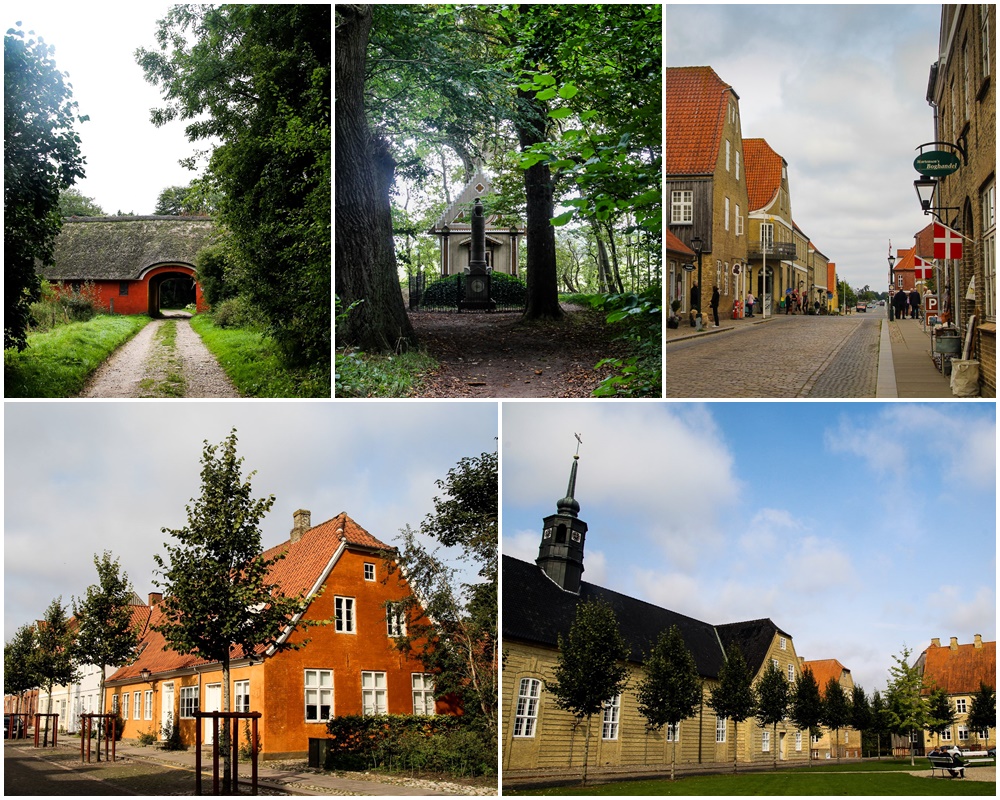
17. Helgoland, Germany
During four sunny September days, I explored the only off-shore archipelago in Germany, Helgoland. It’s a unique place, one island made up of red rocks and the other of low sand dunes and beaches.
I absolutely adored my time on the tiny archipelago, and I didn’t mind revisiting most places twice since I had so much time there. I met seals sunbathing on a beach, watched sunsets and sunrises over the rocky red coastline amongst flocks of northern gannets, hiked just about every trail on both islands, explored the only town in the archipelago and went on a beautiful boat trip around the main island! Four days was the perfect amount of time to get to know the place in depth while still having time to relax.
Read more: Red cliffs, seals and birds galore: A journey to Helgoland, an isolated archipelago in Germany

18. Víkar, Faroe Islands
I’ve been to the Faroe Islands eleven times since 2013, but there’s still so much I haven’t seen. It seems incredible given that it’s such a small country, but the place is just jam packed with amazing places waiting to be discovered. This October, I discovered a place that replaced Nólsoy as my favourite place in the country. That place is Víkar.
Víkar is an abandoned village on Vágar, which was founded in 1833 and depopulated already in 1910 due to its isolated location. To get there, I had to hike 21 km, starting and ending in Gásadalur, but that was just part of the fun. The entire area surrounding Víkar is gorgeous, so is the village itself. There is just so much to explore! And to make it extra special, the village is home to probably the most isolated black sand beach in the country!
Read more: An abandoned world: A challenging hike to the forgotten Faroese village of Víkar
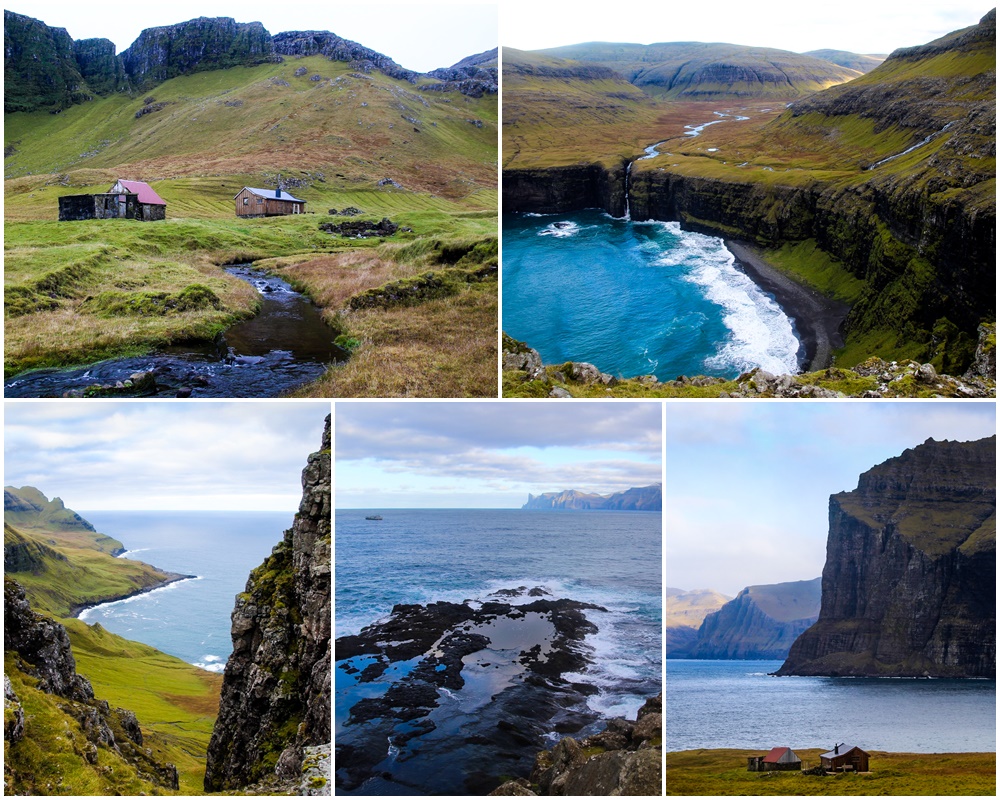
19. Ærø, Denmark
With a cancelled trip to Switzerland and Liechtenstein, my mum and I chose the charming Danish island of Ærø as our alternative destination. A decision that we definitely didn’t regret.
Ærø is the perfect place for a weekend getaway. With its fairytale village of Ærøskøbing, abundance of archaeological sites, gorgeous nature and colourful beach huts, Ærø has something for everyone!
Read more: November on Ærø: A weekend getaway to a unique Danish island

20. Lolland, Denmark
At the end of the year, I moved to the island of Lolland, the fourth largest island in Denmark. Although I’ve been working most days since I arrived, I’ve spent a few weekends exploring my local area of Rødby and Rødbyhavn as well as the nearby city of Maribo, and I’ve been on a hike along an old railway track.
So far, I really like Lolland and I can’t wait for 2021 to reveal what else it has to offer!
Read more: Welcome to Rødby: I’ve moved to Lolland to work on an excavation

My Top 5 Favourite New Places of 2020
Below are the places that truly spoke to my heart this year.
- Víkar, Faroe Islands
- Raasay, Scotland
- The Uists, Scotland
- Stralsund, Germany
- Helgoland, Germany
Other new places that I visited in 2020
- Scotland: Inverness, Barra and Vatersay
- Germany: Albersdorf, Greifswald, Lübeck, Fehmarn, Wismar, Poel, Munich, Unteruhldingen, Konstanz, Reichenau Island, Donaueschingen, Maulbronn, Speyer, Heidelberg, Lorsch, Messel, Langenhain, Würzburg, Rothenburg ob der Tauber, Baunach, Bamberg, Weimar, Naumburg, Halle, Eisleben, Goslar, Hahnenklee, Biesenthal, Magdeburg, Dannewerk and Haddeby
- Switzerland: Rhine Falls
- Faroe Islands: Slættanes
- Denmark: Askø and Lilleø
Leave a Comment
Pingback: My favourite new destinations of 2021 – I Live as I Dream on 27/12/2020
Pingback: My favourite new destinations of 2024 – Northtrotter on 27/12/2020
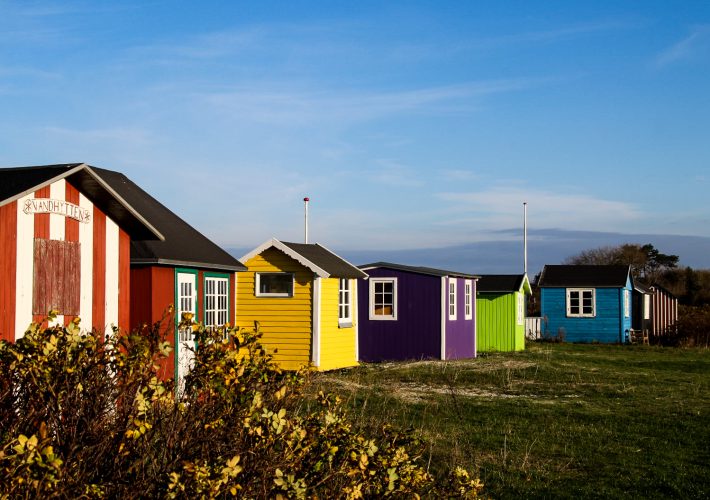


4 COMMENTS
Renates Reiser
4 years agoWow, so many gorgeous places! I’m dying to visit more of the Hebrides, and your pictures from Austria are spectacular! I love to see so many places I haven’t heard of on this list as well. Rügen, for example, looks amazing. 😀 Can’t wait to explore more of Europe, when it’s possible again.
Melissa Cherry Villumsen
4 years agoHehe, Europe is spectacular, isn’t it!? It’s a tough choice between Asia and Europe, but I think I would have to choose Europe as my favourite continent! There’s just so much to see in all countries despite their small sizes! Hopefully those borders will open soon, so we can both go explore more!